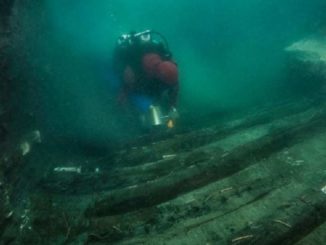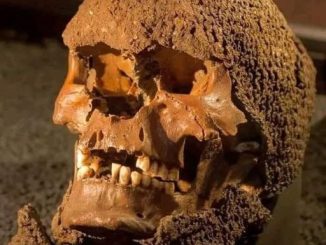Officials from the Egyptian Antiquities Department said the foundation of the funeral home belongs to the Ptolemaic and Roman periods and was built with colored lime mortar and decorated with colorful tiles.

The funeral home dates back to the Ptolemaic and Roman periods. (Source: Egyptian Ministry of Tourism and Antiquities)
The Egyptian archaeological mission on December 1 said it had discovered a large funerary building/structure dating back to the Ptolemaic and Roman periods, at the Garza archaeological site in the city of Fayoum, this country.
This is the 10th excavation season of the Egyptian archaeological delegation in Garza since 2016.
The village of Garza, formerly known as the village of Philadelphia, was founded in the 3rd century BC as part of an agricultural reclamation project undertaken by King Ptolemy II in the Fayoum region.
The establishment of this village was to ensure a source of food for the Egyptian kingdom and for both the people of Greece and ancient Egypt.
Head of the Egyptian Antiquities Department in the central region of the country, Adel Okasha, said the funeral home’s foundation was built with colored lime mortar and decorated with colorful tiles.
In addition, archaeologists also discovered four pillars in the vicinity of this funerary structure.
Also according to Mr. Okasha, in addition to the above mentioned funeral home, the Egyptian archaeological delegation discovered a number of portraits, commonly known as Fayoum portraits.
Mr. Okasha asserted that these are the first portraits discovered since British archaeologist Flinders Petrie unearthed a number of similar artifacts in 1907, so this is one of the archaeological discoveries. The most valuable archeology in this year’s excavation season.
Meanwhile, according to the head of the Egyptian archaeological delegation Basem Jihad, during excavations in Garza, this delegation discovered a number of coffins in ancient Egyptian and Greek styles.
Mr. Jihad added that the new discoveries and many previous discoveries at this archaeological site show a combination of architecture and artefacts from both ancient Egyptian and Greek civilizations.


